Riding the Crescent to New Orleans
I decided to travel to this week’s public media conference in New Orleans by train. It takes about 30 hours from the north country–getting to a station (2-7 hours), then the ride itself, whether from Albany, Syracuse or NYC, is over 24 hours.
Why on earth, you ask? Well, it wasn’t about cost: by the time you factor in mileage to a departure point and food along the way, the train is only marginally less expensive. And, of course, you have to have extra time at either end for the additional travel day.
I took the train for three reasons: I love trains; I hate what large airlines and airports put you through these days; and, it’s a better choice for the environment.
There’s this, too: I appreciate the experience of ground travel as a way to understand how Point A is related to Point B, and everything in between. The Crescent follows a remarkably direct route from Pennsylvania Station in NYC to Washington DC, through Virginia and the Carolinas, then across Georgia to Atlanta and into central Alabama through Birmingham, southwest through Mississippi and down to New Orleans.
As we worked our way deeper into the South, I looked at the landscape, the modest cities, and whistle-stop towns through two sets of eyes: seeing how things look today, and remembering how it all looked–and more importantly, felt–decades ago when I traveled an almost identical route by bus.
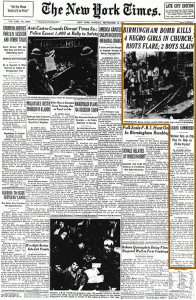 Entering Alabama and stopping at the Birmingham station, I wondered if I was the only person on the train who hears “Birmingham” and immediately flashes on a 1963 headline about a fatal church bombing and makes this association.
Entering Alabama and stopping at the Birmingham station, I wondered if I was the only person on the train who hears “Birmingham” and immediately flashes on a 1963 headline about a fatal church bombing and makes this association.
(Earlier today, I talked with a long-time friend, Scott Hanley, who recently became manager at the public radio station based in Birmingham. Scott used to work at a Pittsburgh station and said the two cities are not that different–Birmingham is thought of as a key southern rust belt city which, like Pittsburgh, is going through a 21st century rebirth, starting to shine in new ways as a statewide hub for higher education and medical services. The city proper has a demographic that is almost 50/50 black and white; the greater metropolitan area is about 35% black. The church bombing will be recognized in a variety of ways in 2013, the 50th anniversary of the attack.)
I spent time in Alabama, two years after the church bombing, walking the road between Selma and Montgomery during the third attempt to reach the capitol. Dr. Martin Luther King, Jr. led the march as a way to draw national attention to the struggle for voting rights. That march, in many ways, was a culmination of years of brutal struggle by so many extraordinarily brave (mostly black) citizens of the South who risked their lives to gain the vote.
I mention this now in the context of our recent election–first, of course, we have just elected an African-American for a second term as President. But more importantly, I think this piece of our fairly recent history deserves remembering if you are someone who does not vote. The history reminds us that the right to vote is a precious privilege–for which people still alive today took great personal risks to achieve. Others, died in the process.
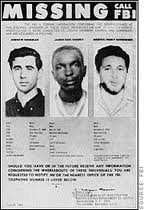 Well, while we’re on this thread, history continued to flood in as the Crescent worked its way diagonally across Mississippi, including centrally located Neshoba County where three young men–working on voter registration–were murdered in 1964.
Well, while we’re on this thread, history continued to flood in as the Crescent worked its way diagonally across Mississippi, including centrally located Neshoba County where three young men–working on voter registration–were murdered in 1964.
Take a second look at the picture I took of the Birmingham train platform. What’s remarkable about it is what’s no longer remarkable: black and white people sharing the same facilities and services in the deep South. Grim as the history may be, divided and imperfect as our society may still be, we have made progress and should be inspired by the impact we have every time we make a collective decision to treat each other better. Call it the long-term impact of the Golden Rule.
Train travel invites conversation.
My first seatmate was a 30-something black man who had been in NYC to visit his girlfriend. Both are originally from a small Alabama town. He is working as a cook on a Gulf oil rig and was heading back to Lafayette, LA to reconnect with his team. He works two or three weeks, then has a week or so off. Frequently, he travels to NYC during his time off. He had ridden the Crescent many times.
In the dining car, the host seats people together wherever there’s room to fill out tables. At breakfast, I spoke with a 60-something white man who is CEO of a New Jersey-based accounting firm and who also teaches and consults around the country. He was heading to New Orleans to lead a training session. At lunch, I was seated with a middle-aged white New Zealand couple. The wife had come to run the NYC marathon, which had been cancelled because of the storm. They’ll be visiting New Orleans for a few days then flying to California and home.
Takeaways from the train ride: all of the people I talked to were familiar with public radio and most were at least occasional listeners who value public media. I am always surprised by how far our network of stations has come since I started at NCPR in 1980. Public media–radio, tv and now digital content–matters to a lot of people. While the New Jersey businessman described himself as a political conservative he said, paraphrasing, “I resent all tv news stations that promote their own political agenda, whether left or right.” He went on to say that he trusts NPR for its efforts to cover stories comprehensively and fairly. Wow. And he doesn’t even work for us! The New Zealand couple, who made it clear they were very liberal and opposed the war in Iraq, were pleased to discover public radio in NYC–they thought all American media was like FOX. (They were also delighted to learn that NCPR airs some daily news from the BBC.) And the oil rig worker? Knocked my socks off (mostly because he’s young and black and does not fit into the typical NCPR demographic), he listens to Morning Edition in the galley.
Finally, this: somewhere in southwestern Mississippi I overheard a 50-something southern black man talking to a younger black woman. I wasn’t really paying attention until I heard him say to her (paraphrasing a bit here), “Used to be we couldn’t go in the same train car or bathroom as them.” Other people do indeed remember the history.
We arrived in New Orleans in the evening. The train station is not one of those elegant grande dames that we see in many northeastern cities (Utica’s station comes to mind here). But I made it! And had a great ride.
The first morning, rainy. But there’s the Mississippi River as I look out my hotel room window. Don’t worry, I’m not going to get into that history now. But no doubt, when I write again later this week, you’ll hear about food and music and, of course, public radio. For now, here’s what my first official meal in New Orleans looked look–egg on biscuit at the neighborhood breakfast joint. Simple and really good.
Tags: alabama, birmingham, civil rights history, mississippi, new orleans, public radio, trains





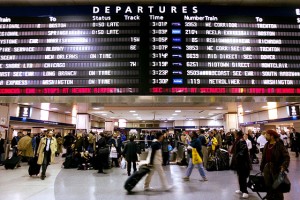
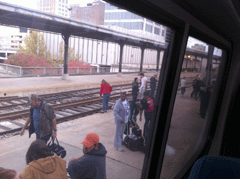
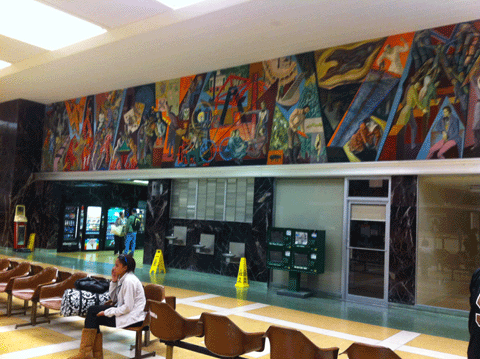
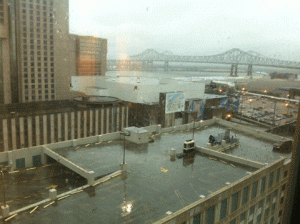
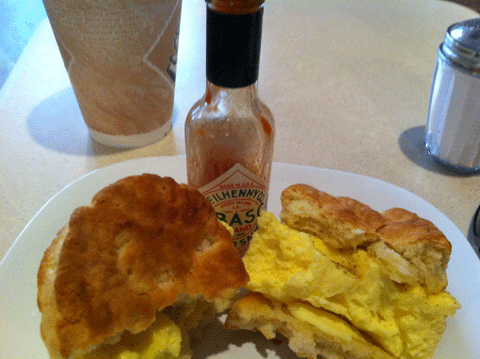

.png)

We take the train a couple of times a year to visit our daughters in California and Texas, have done it several times. We love traveling that way primarily for the wonderful conversations and for seeing the backyards of America and really feeling the scope of the country. I’m glad you took the time to travel that way!
We all need to slow down and enjoy things like this. The train is probably a thousand times more fuel efficient, the space to move around in is endless, there’s a DINING CAR!! which means real meals with real food, and all you have to do to enjoy the finest mode of travel is take and extra few days for your trip.
What we really need is a rail connection from Syracuse to Montreal. We could go anywhere.